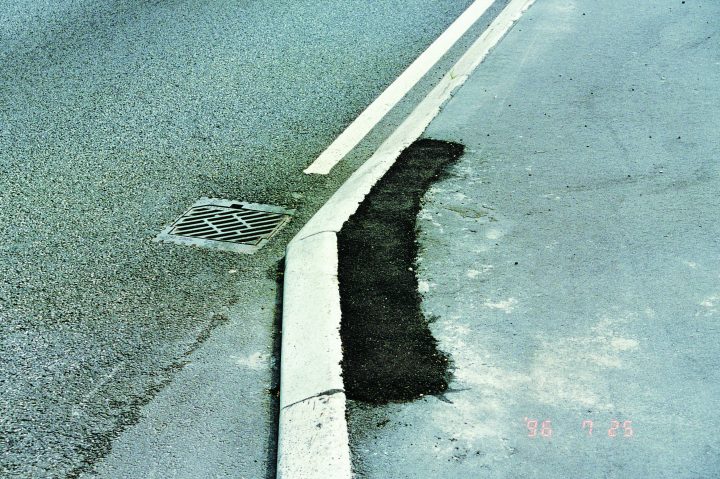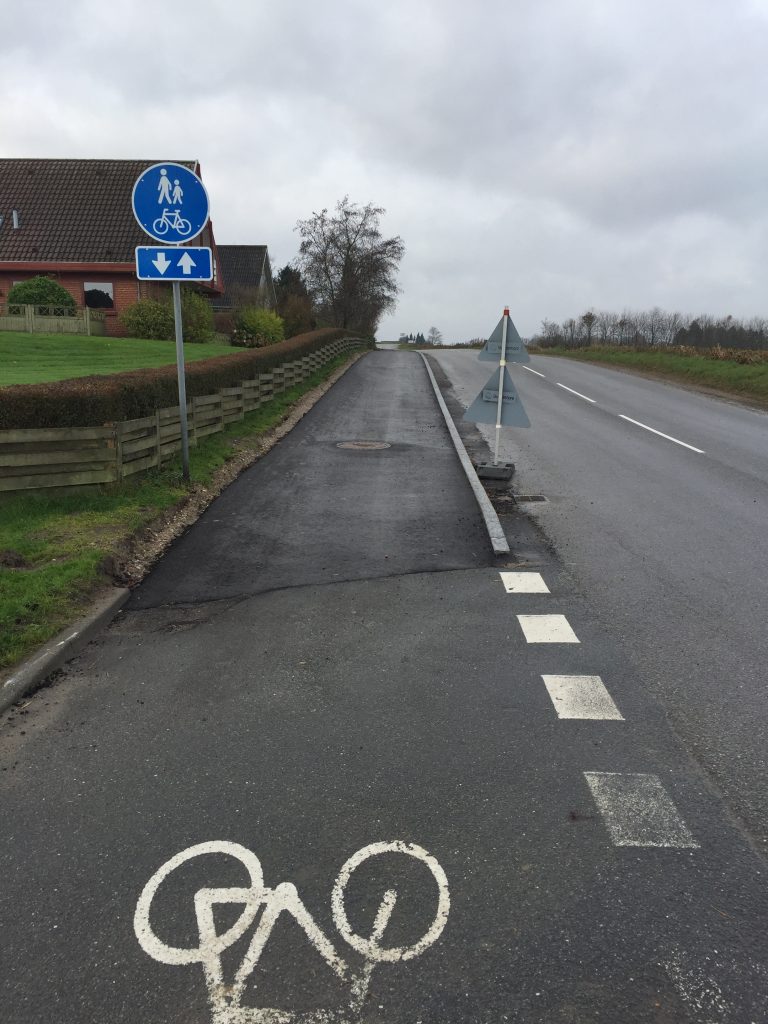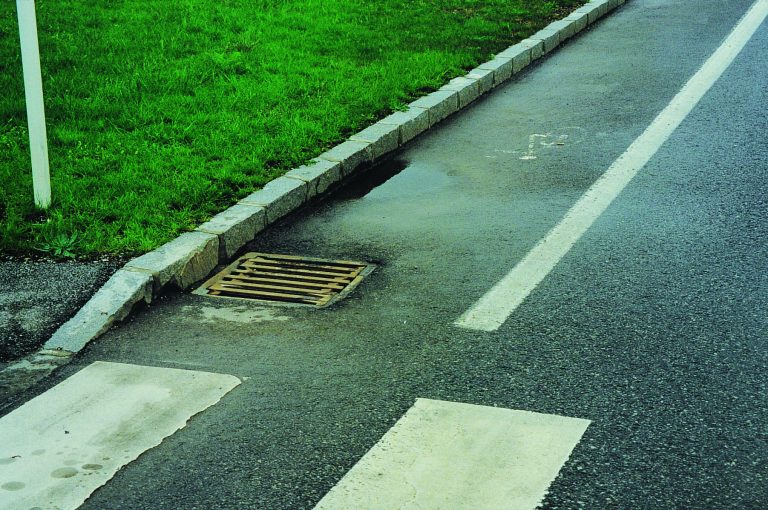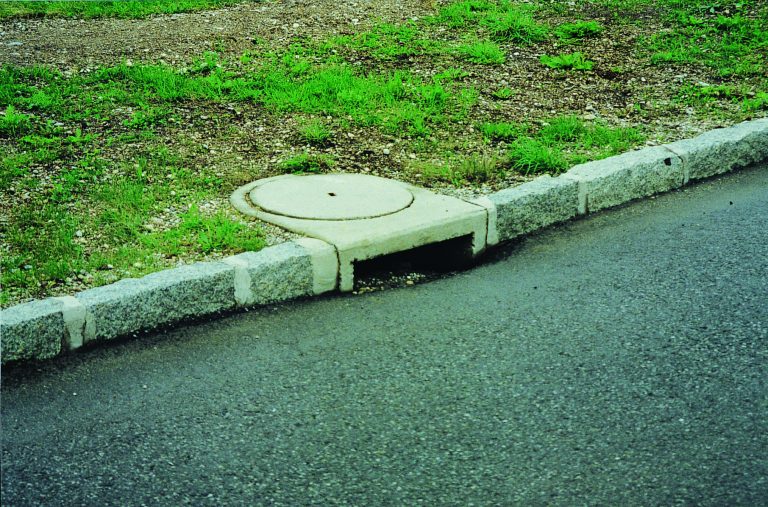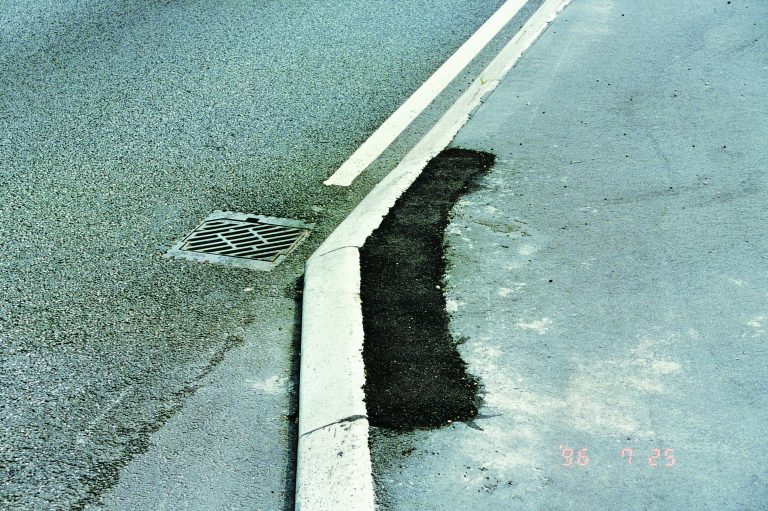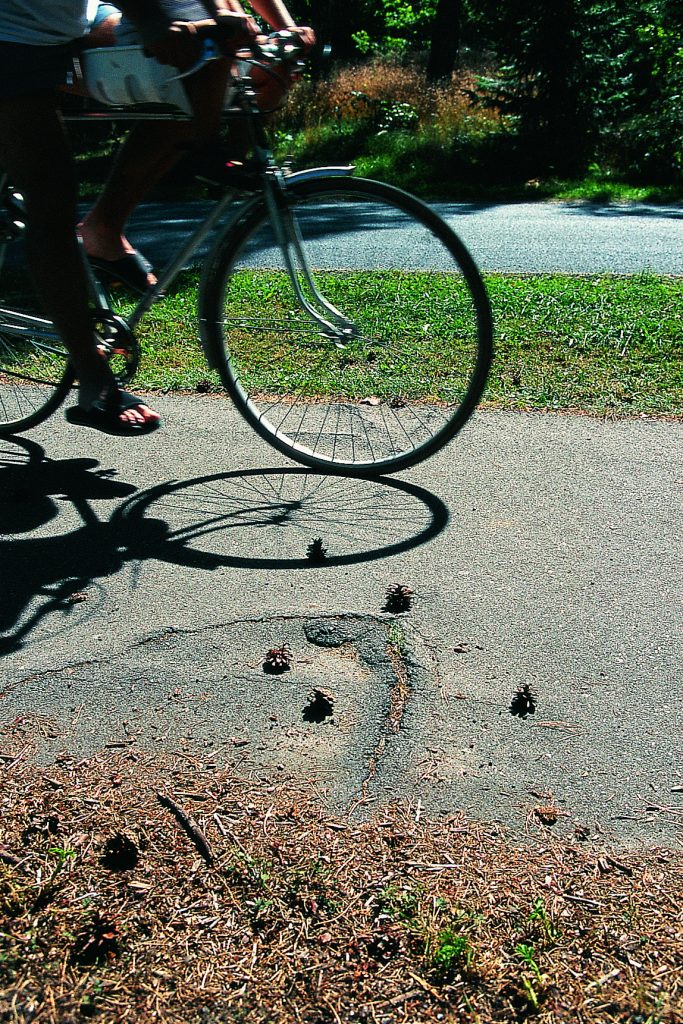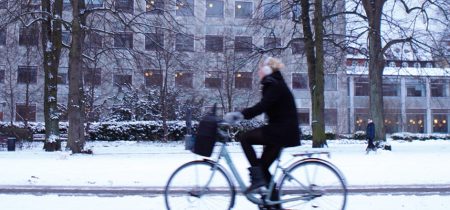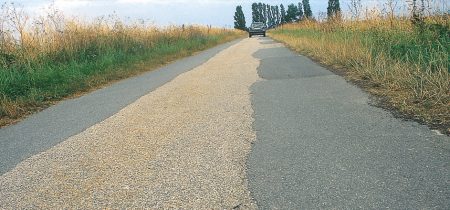Repairing cycle tracks and roads without cycle tracks
Poor quality cycle tracks are best improved by major renovation. This is rarely carried out as a maintenance task, but is usually done in connection with other road reconstruction. Renovation is costly as it may be necessary to replace the road base and drainage construction, install kerbs, and restructure pavements.
By Aros Kommunikation
Some major renovation may be integrated with cable laying. It may be a good idea to carry out extensive renovation using a construction budget. It’s easier to find funds for extensive renovation projects if other road and path improvements are being carried out at the same time. A typical example is the desire to widen the cycle track.
In all cases of major renovation it’s a good idea to upgrade cyclist safety and service levels so as to ensure a permanent improvement of cycling conditions. This is the most cost-effective means of utilizing available funds. Operation and maintenance should always be an integral part of roads and paths planning.
- Photo: Skanderborg Kommune
- Photo: Skanderborg Kommune
Time lag after new construction
The normal practice for major road renovation and new construction is to wait until the year following the completion of all work before laying the wearing surface. The time lag between laying the base and the wearing surface is necessary due to the settlement that occurs after work is completed; this is unavoidable in practice. When cyclists are informed of this, for example by writing “temporary road surface” directly on the road base, they are less likely to complain. Since there is often very little traffic on cycle tracks, the time lag sometimes only lasts a few months.
Roads without cycle tracks
Repairs aimed at improving cycling facilities should have top priority on roads without cycle tracks. Such repairs include replacement of gully grates aligned the wrong way and reinstatement of uneven surfaces after utility construction. Transverse gullies can be particularly uncomfortable.
Gully grates and manhole covers
Some gully grates pose problems to cyclists because of their placement, difference in level, or grating. Gully grates can be height adjusted so they are flush with the road surface, a so-called “floating” grate, or moved into the kerb. Grates with longitudinal slots should be rotated 90 degrees or replaced with a more cycle friendly type of grate.
Older types of sewer covers that are fixed to the well frame are often unacceptable due to the difference in level from the wearing surface, and should be replaced by an adjustable model. The costs should be defrayed by the underground cable owner.
Cyclists will often try to avoid cycling over manhole covers and grates in the cyclist circulation area and will be tempted to make a dangerous swerve. This behavior is due to fear of jolts or bumps even if the cover poses no real threat. This can be avoided by integrating the grate in the kerb with a side entry inlet. However, this type of gully is rarely used in Denmark and there is very little experience with it.
The city of Copenhagen, however, installed side entry gullies in one new construction project (2010) with very narrow cycle tracks. The city is also carrying out pilot projects testing side entry inlets in areas where the road surface is slated for renovation or where cycle tracks are very narrow. Side entry gullies are also to be found in Herning, Odense, and elsewhere.
Carrying out repairs
Cycle track repairs: only fine grained asphalt should be used in the wearing layer, maximum stone size 6mm. Granite aggregates should be used. The work should primarily be carried out by machine in the case of cable trenches along the road or when repairing larger areas. Trench reinstatement across the road should be carried out by hand with a trowel.
Read more about the various types of repairs described in the Danish road directorate’s road rules and rules for tenders here.
Tree roots
Repairing damage to cycle tracks from tree roots usually only has a short- time effect as the roots continue to grow and damage the asphalt and kerbs. It may become necessary on certain stretches to remove individual roots beneath the traffic area. This is a serious interference with the tree and should only be carried out under professional supervision.
The problem is magnified when the bed in which the tree is planted is too small, which means poor growing conditions for the root network. It’s worthwhile considering felling and replanting the tree, depending on its age and species. Good growing conditions prevent the problem – typically 30 cm of topsoil, more than 80 of well drained, uncompressed subsoil, on loosened ground. Since normally the roots have the same circumference as the treetop, the circumference of the bed should be as large as possible. Growth friendly soil may be placed beneath the cycle tracks, thereby increasing the tree’s chance of survival. Poor growing conditions may mean that trees along the road do not thrive or may even die, perhaps only 5-20 years after being planted.
Sources: Collection of cycle concepts, 2012, and Per Kristensen, head of maintenance department, Technical and Environmental Administration, Municipality of Aarhus


